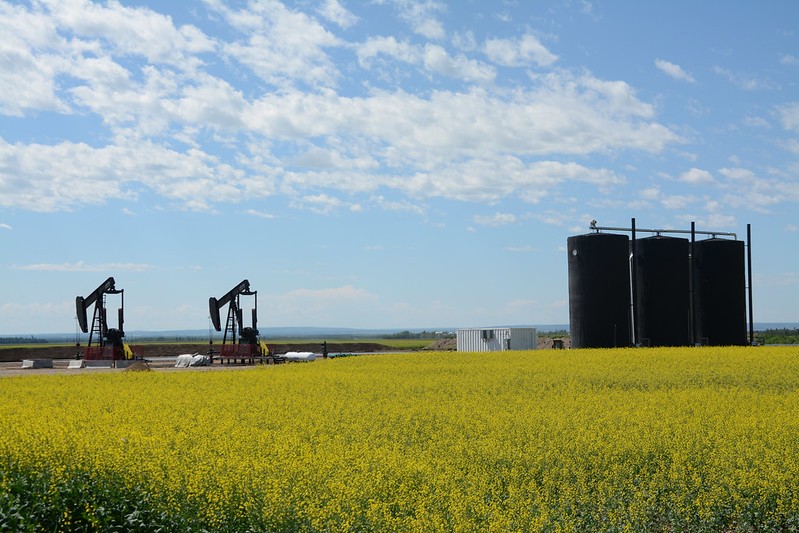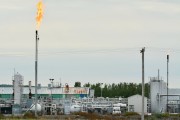Methane mitigation is often referred to as the “low-hanging fruit” of emissions reductions from the oil and gas sector. That is because, with methane, we have many key ingredients for success: cost-effective and scalable solutions, proven regulatory approaches, technical capacity and expertise, and a high degree of alignment among stakeholders (including the public) about the need for meaningful action.
Last week’s announcement of draft federal regulations to cap emissions from the oil and gas industry has once again reinforced the importance of methane mitigation. That’s because reducing oil and gas methane emissions in line with Canada’s reduction target of 75% by 2030 (from 2012 levels) will be key to meeting the cap - especially for many of the relatively small companies involved in the conventional part of the sector. However, in the wake of the draft regulations, some industry representatives have commented that the conventional sector has already exhausted its use of cost-effective methane solutions. In other words, some think that the low-hanging fruit is already gone.
Those that think the low-hanging fruit are gone are likely thinking of impactful regulatory requirements, such as:
- The introduction of regular leak detection and repair (LDAR) requirements
- The requirement to change from high- to low-emitting pneumatic devices
- Alberta’s regulatory limits on methane venting
These are real policy successes, and the industry can be proud of the reductions they have achieved by adhering to them. As we continue to make progress mitigating methane emissions, it makes sense to prioritize the biggest opportunities for lowest-cost methane mitigation. Measurement studies – such as those done by researchers at Carleton University’s Energy and Emissions Research Lab and St. Francis Xavier University’s FluxLab - can help us identify the largest remaining emissions sources across regions.
Studies show, for instance, that compressors, tanks, and unlit flares were the largest remaining sources in B.C. at the time of measurement (2021), while tanks, separators, pneumatic pumps and instruments, and compressors were the largest remaining sources in Alberta. Continued measurement studies are critical to understanding how these sources continue to change as policies take effect.
There are plenty of cost-effective opportunities to address remaining sources of methane emissions, including:
- Further addressing pneumatic devices
Pneumatic devices are gas-driven instruments that control valves. They are a well-known and historically significant source of methane emissions. While regulations have often required switching to low-emissions devices, zero-emitting options exist. Some require grid access, which would not be feasible at some remote sites. However, others integrate solar power and batteries and have been proven to work reliably even through the coldest months of the year. For legacy wells where such options are infeasible or cost-prohibitive, identifying and retiring pneumatics that are unnecessary for the reliable functioning of the well can be an effective option.
- Addressing venting in Saskatchewan
While venting has been significantly reduced in Alberta, Saskatchewan continues to have an extremely high methane loss rate because it is an oil-producing province without infrastructure to capture and route gas. While certain alternatives to venting require construction of costly pipeline tie-ins, cost-effective alternatives such as enclosed incinerators and combustors can destroy waste gas so that it need not be vented into the atmosphere.
- Improving flare performance and integrating enclosed combustion
Recent studies have shown that unlit and underperforming flares can be large sources of emissions. Meanwhile, in recognition of the harmful air quality and health impacts of flaring, leading jurisdictions have begun to prohibit routine flaring. Where flaring is permitted and strictly necessary for safety purposes, assessing and improving flare performance is critical. Where possible, operators should be required to implement alternatives to flaring such as enclosed combustion.
- Improving leak monitoring
Leading jurisdictions are taking a risk-based approach to LDAR and ratcheting up the frequency of inspections for high-risk facilities, as well as the general comprehensiveness of LDAR requirements. This builds progressively on prior requirements and established operational capacity and knowledge. The federal government’s proposed amendments to the oil and gas methane regulations take this approach. Jurisdictions like B.C. and Alberta have also created flexibility and leveraged technology advancements by allowing the use of alternative monitoring technologies, and these sorts of programs should continue.
- Requiring more direct measurement and improving reporting
A decade of research has shown that oil and gas methane emissions are consistently underestimated and underreported, largely because they are estimated using inaccurate emissions factors, instead of being directly measured. Leading jurisdictions are recognizing the need for improved measurement, monitoring, reporting, and verification (MMRV). Measurement-informed inventories are the best way to determine the methane-intensity of oil and gas value chains. Improved MMRV can then enable regulators to further enfold methane emissions under industrial carbon pricing systems, which can make the business case for reductions even clearer.
- Notifying operators when satellites detect large emissions events
Satellites are less effective at identifying emissions events in Canada than in other regions, given its high latitude and frequent cloud cover. Nevertheless, they sometimes identify large emissions events that regulators are not aware of. When that happens, it is important to have systems in place to quickly notify operators so they can fix the problem. In the U.S., third-party reports based on satellite data can now trigger a regulatory obligation for companies to perform a root-cause analysis.
- Retrofitting lean-burn compressor engines
Concerns about nitrogen oxide (NOx) emissions from compressor engines have led some companies to use low NOx, ‘lean-burn’ compressor engines. These low-NOx engines produce higher methane emissions. However, solutions exist, including options to retrofit these engines to reduce their methane emissions. That said, the retrofit option only works for certain sizes of engine, and additional technological and policy solutions are needed to address methane emissions from compressor engines more broadly.
- Improving facility design
Perhaps one of the lowest of the remaining low-hanging fruits is the opportunity to design better systems in the first place. Improved facility designs can creatively engineer fail-prone elements out of facilities, reduce the need for venting and flaring during routine maintenance and non-routine operating conditions, and where possible integrate electricity-driven devices instead of gas-driven ones.
In short, there’s still plenty of work to be done to reduce methane emissions from oil and gas production, and much of it is comparatively easy and cost-effective relative to other, higher-cost decarbonization options elsewhere in the oil and gas sector (such as carbon capture in the oilsands). Not only does this work keep valuable natural gas in the pipe, it is critical to the oil and gas industry’s future competitiveness in a global energy economy that will increasingly favour low-emissions products.






